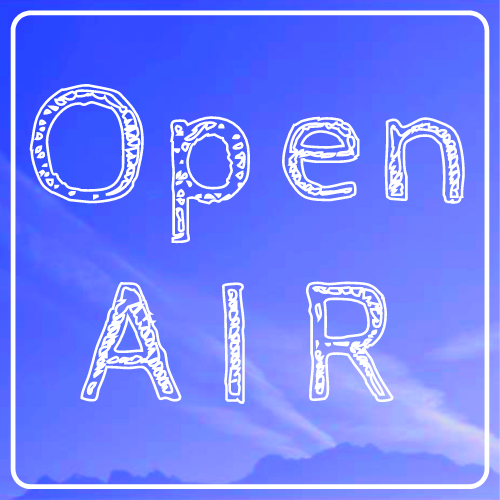A Conversation with Cecil Howell
2019 Open AIR Artist-In-Residence
Flathead Lake Biological Station
[Landscapes] are continuous, yet fragmented by the artificial boundaries we project upon them. They are bound to the reality of their bedrock, yet our perceiving minds interpret them through a cloud of emotional and visual references.
-Cecil Howell
Open AIR: Can you talk about your experience as an Open AIR Artist-in-Residence?
Cecil Howell: My residency took place at the Flathead Lake Biological Station for three weeks in the Fall of 2019. The Center, which frequently hosts visitors, was very welcoming and well set up for hosting residents. I was given a little cabin with a room for sleeping and a room for working and access to a shared kitchen. The scientists gathered for a happy hour the first week I arrived and from there on were available for meetings, took me on field sampling trips, and lectures within the community. I was deeply inspired by the exchanges I had with the scientists, from reviewing the data they are collecting to understanding what kinds of questions they are asking. During my tenure, the alliance between the arts and science became increasingly clear to me; both fields study the bounds of our reality. I also loved the opportunity to exhibit with the other residents at the University of Montana gallery, both as a chance to see what other people made during their residencies and to see the different sites that Open AIR partners with.
Open AIR: What was your research process during this time?
Cecil Howell: Before I arrived at the Bio Station, I collected some data on the watershed, printed out base maps, and read some of the articles published by the Station. Once on-site, my research was largely driven by meeting with the different scientists, and driving around the watershed, photographing and drawing locations that seemed of interest to me or were pointed out to me by the scientists. When I arrived, I wasn't quite sure what form my art was going to take; I wanted to approach the work with an open mind and let it emerge from the experience of being there. A lot of my time was spent making diagrams and notes, feeling like my thoughts were expanding, but not necessarily seeing that in my work. It took a few months to begin to translate those thoughts into drawings, which I've continued to create since leaving Montana.
Open AIR: How would you describe your work?
Cecil Howell: Representing landscapes is a process of drawing ambiguities. Landscapes are infinitely old and constantly changing, but a map represents only a moment in time. They are continuous, yet fragmented by the artificial boundaries we project upon them. They are bound to the reality of their bedrock, yet our perceiving minds interpret them through a cloud of emotional and visual references. While scientific cartography can exquisitely define immediate realities, the emerging and impressionistic qualities of a landscape are often best explored through the arts. My work exists at the confluence of these two fields, in the dialogue between the physical and the abstract landscape, between science and the arts. My focus is the exploration of place: how it evolves over time, how we connect with it, and how we can design it.
Open AIR: What are you up to now (post Open AIR)?
Cecil Howell: Since Open AIR, I've continued to work on a mixture of landscape and graphic design projects. One exciting opportunity that emerged from the residency is a commission to help a symposium of scientists on developing a graphic for their paper on mining impacts. The lead scientist is connected to the Flathead Bio Station and found out about my work through them.
Open AIR: What keeps you returning to this subject, body of work?
Cecil Howell: Having been trained as a landscape architect, I am deeply curious by how we define and relate to the landscape. I believe that many of the extractive policies of the anthropocene relate to how we've chosen to see/think about the landscape, and that subtle shifts in our consciousness can bring us into a more reciprocal relationship with the land. My work is largely about trying to shift my own mind so that I might then visualize that different awareness and bring it to a greater audience. I also believe that art can imbue landscape with meaning, and hope that my work can contribute in some way to helping people connect with place.
Cecil in conversation with one of the scientists at FLBS.
This interview was conducted remotely between Open AIR and the Artist.
To see more of Cecil Howell's work, please visit https://cecilhowell.com/
This Residency was made possible by a partnership between Open AIR and the Flathead Lake Biological Station, the second oldest biological field station in the US and the oldest west of the Mississippi River. They have one of the oldest, contiguous lake datasets in the world.





